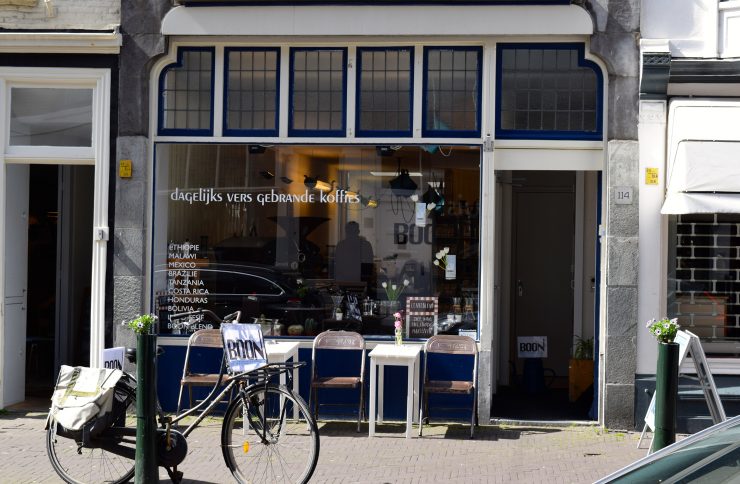
Pelting hail one minute, hothouse humidity the next. Doomsday clouds one hour, messianic gray-breaking sun rays the next. It’s a skittish morning for weather in The Hague, but at Boon, the atmosphere is stable and pleasant. That’s not simply because this is an active koffiebranderij, a Dutch “coffee roaster,” but specifically because Lianne Bertens and Ad Zwijgers control the climate.
Six days a week, the silver-haired couple can be found amidst their silver-packaged products. She is the roaster. He is the barista. After retiring from the non-coffee world two years ago, Zwijgers joined his wife in business, becoming the supple handler of their two-group La Marzocco Linea Classic and Mahlkönig K30 Twin grinder.
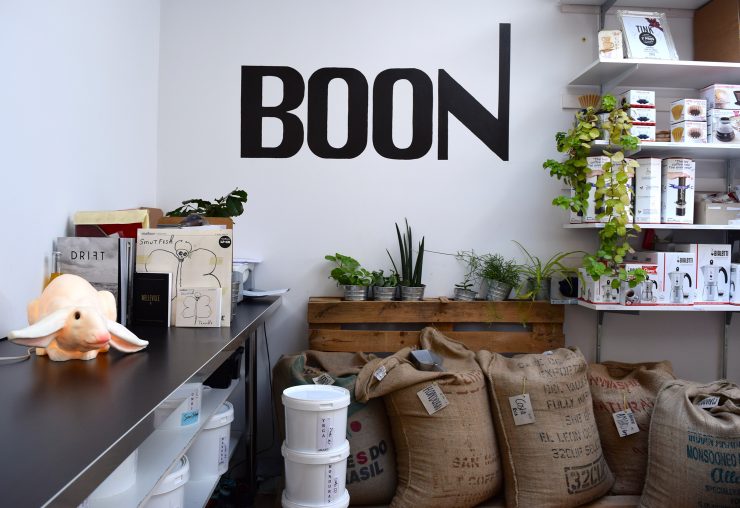
Since opening four springs ago, Boon (which means “bean” in Dutch and is pronounced like “bone” in English) has made a solid name for itself. In fact, the demand for its beans, currently sold and served across the city and elsewhere in the Benelux, convinced Bertens to replace her Giesen W6A roaster with a larger W15A model later this year.
The world does not look to The Hague for coffee counsel—the Netherlands’ third-largest metropolis instead makes headlines as a hub for international criminal tribunals, United Nations offices, embassies, and the Dutch government. It does, though, have a share of new wave cafes and micro-roasters. Among them, Boon booms.
“People always think and tells us: ‘It’s not just your coffee, it’s also the two of you.’ We’re not really trendy or hip, we’re just ourselves,” laughs Bertens.
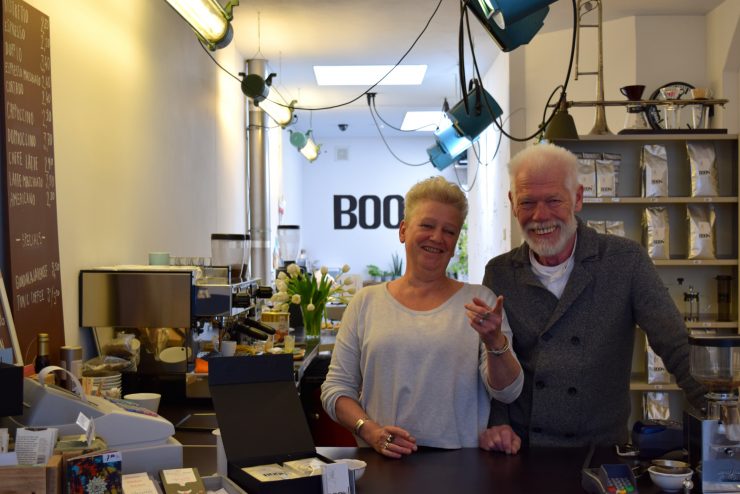
A past career as a chef honed the culinary instincts that guide her work today. Foregoing computer software and fully trusting her senses, she calls it “slow roasting.”
“It’s the same as in the kitchen, you use herbs and spices. One ingredient makes the other stronger,” she says. “For instance, if I have a Costa Rica and I mix it with a Malawi, then it’s more gingerbread-ish, but if I mix the Costa Rica with a Yirgacheffe, then it’s more marzipan.”
For green beans, Boon relies mainly on coffee merchant 32Cup in Antwerp. Typically, 13 roasts are available, including three African coffees, one from India, and “a spicy one” from Indonesia. Bertens’ specialty, however, is creating blends, seasonal and otherwise.
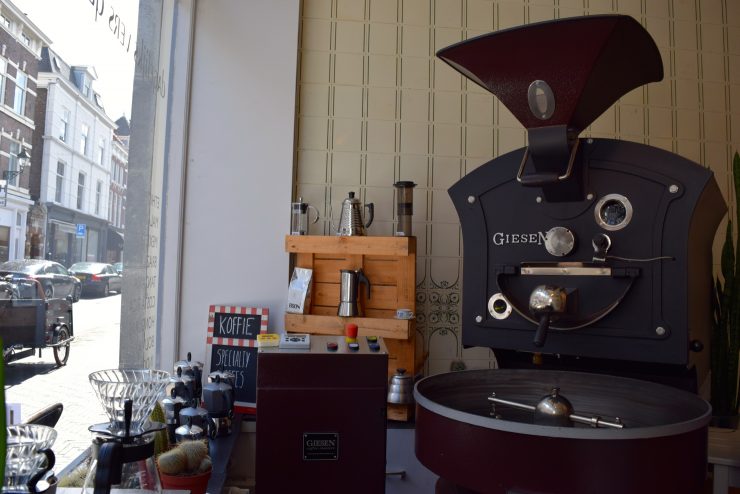
“A lot of people, they are a little bit negative about blends. They think a blend is just putting everything together and expecting it to taste all right. I think you can turn it the other way: you can also use different coffees for customized blends, and that’s what I do for restaurants. I study the menu. I go taste everything, looking for the signature of the chef,” she explains.
So far, the customizations have been for venues that, un-coincidentally, appreciate diversity in species: Hills & Mills, a Dutch-Pakistani-run Himalayan health food restaurant, and the National Museum of Ethnology, which won first place in the best-coffee category of a recent publication about Dutch museums with extraordinary cafes. Bertens’ research for the museum sounds like a magical realist approach to inductive reasoning.
“I went there and was walking around, asking myself: ‘What do I see, what do I smell, what’s the atmosphere here?’ And I wrote a small story about that. And then I took the highlights, and I transformed them into taste, and then went looking for the beans,” she recounts. “I really think that, in really small details, if everything is connected to everything else in your surroundings, then people feel at home.”
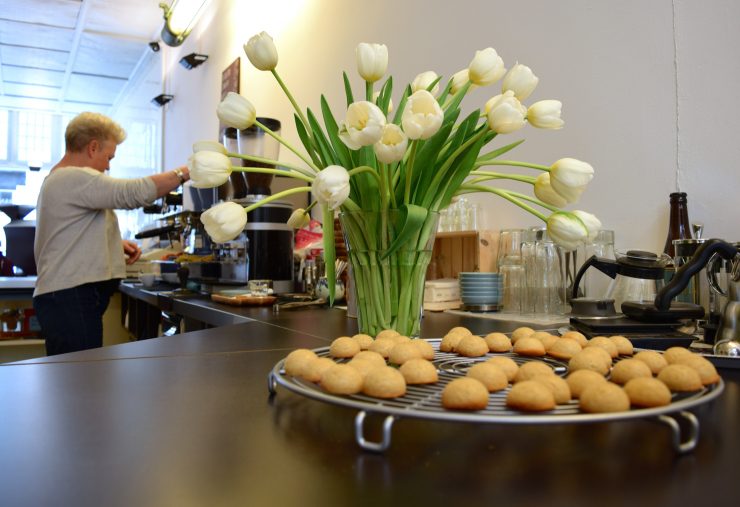
That applies at Boon, too. A few tables, nestled up against the tiled wall, can accommodate 10 guests, though the number doubles when warm weather expands seating to the sidewalk. On first Saturdays of the month, the public is welcome for roasting workshops. The workshops provide a chance, Bertens says, “to take people by the hand and teach them about what makes specialty coffee special.” While the Dutch king’s office at Noordeinde Palace is so near that by now “he should have smelled roasting,” visitors are likelier to intermingle with staff from embassies and expats.
In Dutch tradition, the beverages come with bite-size cookies, freshly made by local baker Zeg het met Koek. Besides espresso, Boon prepares filter coffee à la Hario V60, French press, AeroPress, and… trombone. At the annual Food Feest in Delft, the duo can be spotted repurposing the old instrument, which they, brass players themselves, discovered makes for a festive-looking coffee apparatus and, lined with a Hario dripper, does the brew job.
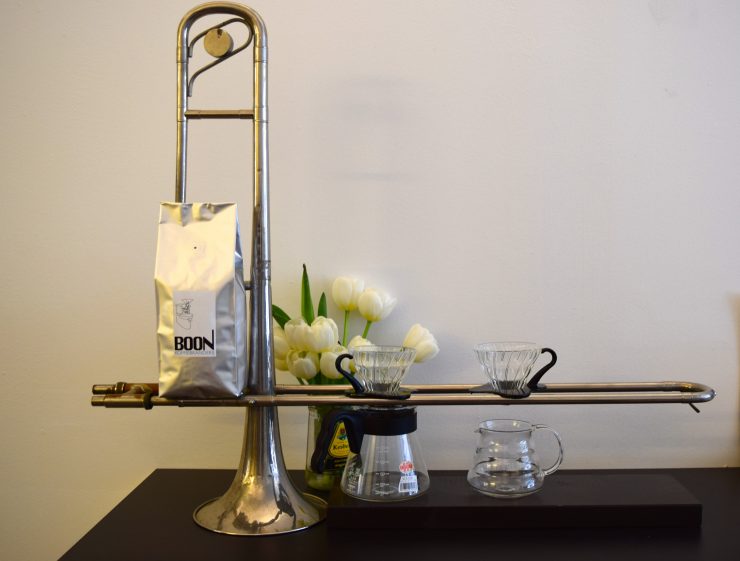
A final word on Boon: Guadalajarense. Urged for inclusion on the menu by a friend who raved about the recipe after travels to Mexico, the Guadalajarense is espresso with condensed milk and lime juice.
And trying it for the first time on this, by now, bright midday, is a young man passing through town while on a work stint from Budapest. Bertens has prepared a tray with all the necessary Guadalajarense components. He squeezes the lime firmly into the shot glass. He stirs, then sips, and pauses.
“Wow. It literally slips away from your throat. It takes away all the bitterness of the coffee,” comes the response. Caffeinated though sincere-sounding, he adds: “It’s my favorite drink from now on.”
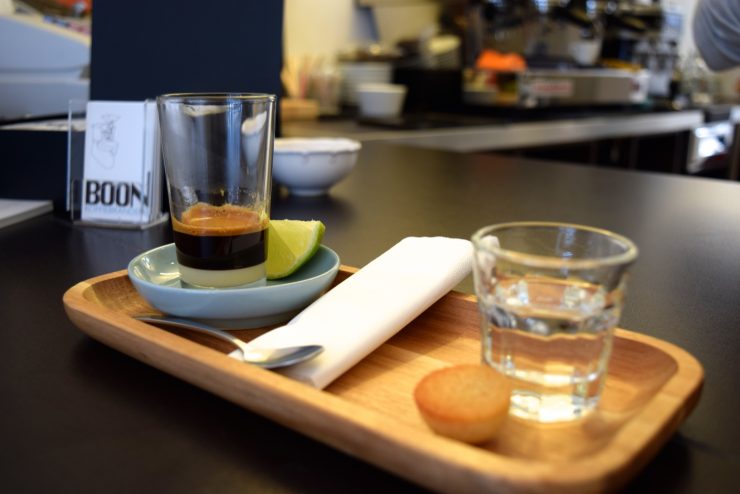
Meanwhile, Bertens, forever the roaster, can’t help but contemplate enhancements to the flavor profile.
“Black pepper would be really nice,” she says.
Boon is located at Prinsestraat 114, The Hague, Netherlands. Visit their official website and follow them on Facebook, Twitter, and Instagram.
Karina Hof is a Sprudge staff writer based in Amsterdam. Read more Karina Hof on Sprudge.
The post Boon Coffee: Slow Roasting In The Hague appeared first on Sprudge.

